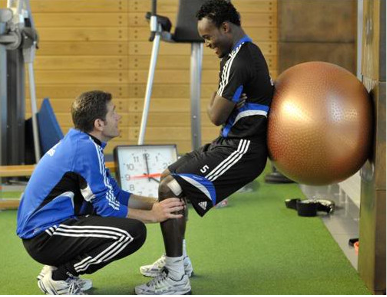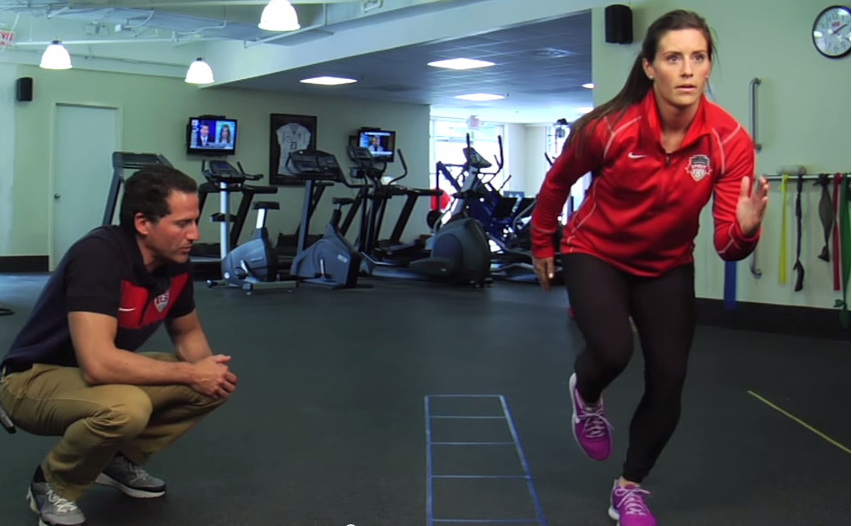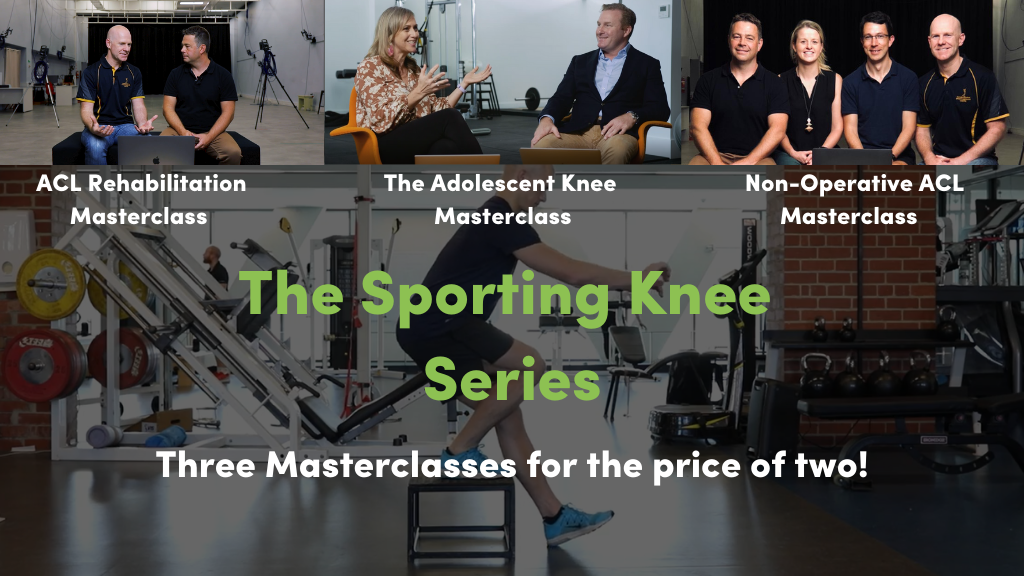I recently took a dive into the second ACL injury literature in young athletes...
And unfortunately, that world is very bleak...
I'll cut straight to the chase.
One study I found showed that 30% of young people (mean age 17) who returned to sport (RTS) following ACL reconstruction will sustain a 2nd ACL injury within 2 years (1). Of this 30%, females were 5x more likely to do so than males.
And before you say, "C'mon Mick, don't jump at shadows. This is just one study".
This research wasn't alone...
In a further review of the literature I started to find a depressing trend:
- 25% of subjects (n= 16, mean age 16 years) sustained a 2nd ACL injury within 12 months upon RTS following ACL surgery; with 14 (87%) being female and 12 (75%) sustaining a 2nd injury to the contra-lateral knee. The authors conclusion was that, in this cohort of young athletes, those that RTS were 15x more likely to sustain a 2nd ACL injury within 12 months (2).
- 29% of patients under 20 years of age (32/110) sustained a 2nd ACL injury within 3 years (3). To put this in perspective, only 8% (35/451) of the subjects aged over 20 years of age in this study sustained a 2nd ACL injury within the 3 year follow up period.
- 23% of subjects (13/56, mean age 16 years) sustained a 2nd ACL injury within 12 months following RTS (4).
With such a concerning trend of 2nd ACL injuries within the first 2-3 years following a RTS, it has lead some researchers (Nagelli & Hewett, 2016) (6), to pose the question:
“Should we be waiting 2 years to allow our younger athletes (<20 years of age) to return to sport?”.
Nagelli & Hewett wrote their paper based on the current ACL literature and make some very valid points. If we are to look purely at biological and physiological healing, the research is telling us that it can take up to 2 years to achieve baseline knee health (ie. full maturation of the ACL graft, resolution of bone bruises), restoration of knee joint position sense (proprioception/balance), restoration of neuromuscular control and restoration of knee strength following ACL reconstruction.

Nagelli & Hewett make a very good argument to delay sport for 2 years.
I don’t know about you, but we are all going to have a very difficult time explaining to a 17 year old, their coach and their parents that we need to wait 2 years before we allow them to RTS. This would be an even more difficult discussion, especially if the young athlete is at a critical stage of their early sporting career and the opportunity for a professional sporting contract is on the horizon.
This is not to say we need to be avoiding difficult conversations. We need to be frank and honest about the risk of second ACL injuries with our athletes. But what I feel often goes missing in the literature on 2nd ACL injuries are the 3 things that are critical to a successful RTS following ACL reconstruction:
1) Was the patient compliant to the ENTIRE rehab plan as set out by their physio, exercise physiologist or strength and conditioning coach?
2) Did the rehabilitation plan include supervised jumping, landing, pivoting, unanticipated change of direction, unanticipated landing and sports specific conditioning?
3) Was the athlete cleared to RTS with strength tests and functional hop tests prior to stepping back on the field/court?
My gut instinct tells me that these 3 things are not frequently ticked off prior to the patient returning to sport, and I have no doubt that the absence of these 3 criteria plays a significantly role in the high rates of 2nd ACL injuries that we see in the literature.

In conclusion, I think 2 years may be an ultra-conservative RTS timeframe for young athletes, but the evidence for biological healing is very hard to ignore. What us health professionals really need to be explaining to our young patients who wish to return to sports that involve hard landing, cutting and pivoting, are the follow key points:
- Up to 30% of people under the age of 20 will go on to sustain a 2nd ACL injury within 2 years upon to RTS. We can't shy away from the statistics, and we need to try as best as we can not to allow the patient sitting in front of us to become another statistic of 2nd ACL injury!!
- Surgery is only 50% of the rehabilitation plan. Surgery only restores mechanical/anatomical stability of the knee. It does not restore functional deficits of the knee; some of which may have been present prior to the primary injury (ie. dynamic knee valgus, poor trunk control, abnormal quad to hamstrings ratio).
- The better the quality rehabilitation (ie. one that includes regular jump, landing, agility training), the more likely the patient will achieve post-operative limb symmetry on strength, hop and agility tests. As a result, the patient will have a significantly reduced chance of 2nd ACL injury.
- The decision to allow unrestricted training and RTS should be based on an orthopedic assessment, time (at least 9 months post-op) AND a battery of strength and functional tests. The tests must include quads and hamstrings strength tests, hop tests and agility tests and the athlete must achieve at least 90% symmetry between limbs on all tests prior to RTS clearance. In my very humble opinion, we should be aiming to get close to 100% on all tests in both fresh and fatigued states.
- With the very high rates of contra-lateral injuries, as much as possible, single leg rehabilitation drills need to be performed on BOTH legs.
- For better functional outcomes in non-professional athletes, a supervised physiotherapy/strength and conditioning/sports-specific training plan needs to be conducted for at least 12 months prior to returning to sport.
- Once back playing sport, the patient should be conducting at least 2x per week ACL injury prevention drills (ie. PEP, FIFA 11, KNEE) for the remainder of their sporting career to reduce the risk of 2nd ACL injury.
I hope you have enjoyed this summary of recent evidence and learnt something new! If you’re thirsty for more on ACL reconstruction rehab, stay tuned as we’re about to release a brand new 6-part ACLR Masterclass update in January 2022!
References:
Paterno MV, Rauh MJ, Schmitt LC, Ford KR, Hewett TE. Incidence of Second ACL Injuries 2 Years After Primary ACL Reconstruction and Return to Sport. The American journal of sports medicine. 2014 Jul;42(7):1567-73. PubMed PMID: 24753238. Pubmed Central PMCID: PMC4205204. Epub 2014/04/23. Eng.
Paterno MV, Rauh MJ, Schmitt LC, Ford KR, Hewett TE. Incidence of contralateral and ipsilateral anterior cruciate ligament (ACL) injury after primary ACL reconstruction and return to sport. Clinical journal of sport medicine : official journal of the Canadian Academy of Sport Medicine. 2012 Mar;22(2):116-21. PubMed PMID: 22343967. Pubmed Central PMCID: PMC4168893. Epub 2012/02/22. Eng.
Webster KE, Feller JA, Leigh WB, Richmond AK. Younger Patients Are at Increased Risk for Graft Rupture and Contralateral Injury After Anterior Cruciate Ligament Reconstruction. The American journal of sports medicine. 2014 March 1, 2014;42(3):641-7.
Paterno MV, Schmitt LC, Ford KR, Rauh MJ, Myer GD, Huang B, et al. Biomechanical Measures During Landing and Postural Stability Predict Second Anterior Cruciate Ligament Injury After Anterior Cruciate Ligament Reconstruction and Return to Sport. The American journal of sports medicine. 2010 08/11;38(10):1968-78. PubMed PMID: PMC4920967.
Wright RW, Magnussen RA, Dunn WR, Spindler KP. Ipsilateral graft and contralateral ACL rupture at five years or more following ACL reconstruction: a systematic review. J Bone Joint Surg Am. 2011 Jun 15;93(12):1159-65. PubMed PMID: 21776554. Pubmed Central PMCID: PMC3110421. Epub 2011/07/22. Eng.
Nagelli CV, Hewett TE. Should Return to Sport be Delayed Until 2 Years After Anterior Cruciate Ligament Reconstruction? Biological and Functional Considerations. Sports medicine (Auckland, NZ). 2016 Jul 11. PubMed PMID: 27402457. Epub 2016/07/13. Eng.

Continue building on your knowledge by taking advantage of our bundle series "The Sporting Knee Series"
From young children all the way to athletic older adults, our team of expert clinicians will help develop your skills in the assessment, treatment and management of ACL injury and other common pediatric injuries.
$199 USD
